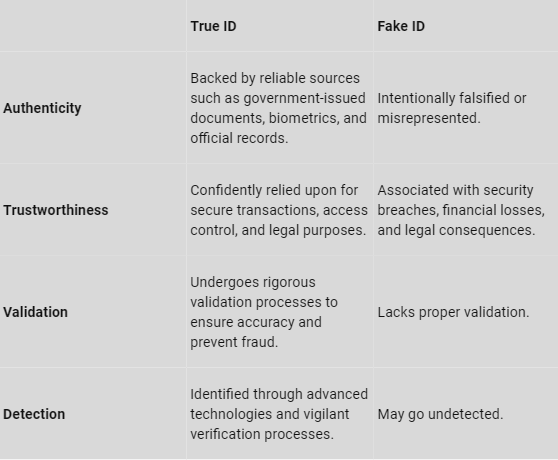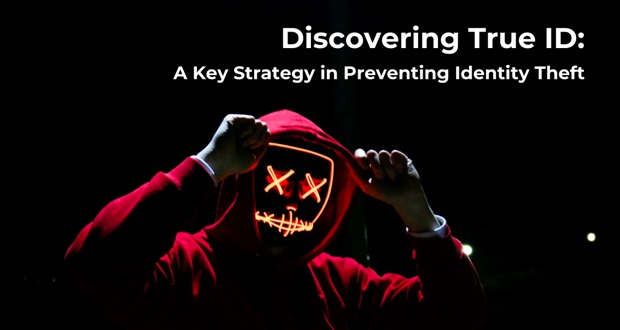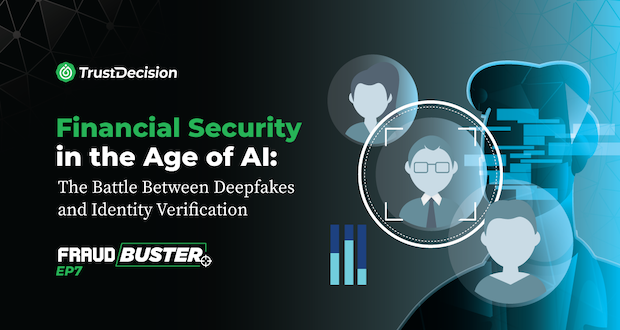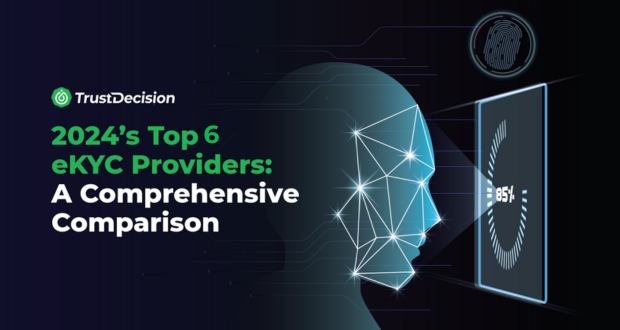Introduction
True ID verification delivers a host of advantages. Enhanced security, reduced fraud risk, and bolstered customer trust are just a few. By implementing robust authentication measures, businesses can safeguard their customers’ personal data and mitigate risk. True ID goes beyond traditional methods, leveraging biometrics and advanced security systems to provide unparalleled protection against identity theft. For individuals and businesses alike, True ID ensures compliance with stringent security standards.
The Risks of Identity Theft
Identity theft poses a significant threat to individuals and businesses alike, leading to financial losses, reputational damage, and legal ramifications. Cybercriminals exploit loopholes in security systems to gain access to sensitive information, making it crucial for everyone to prioritize identity verification and protection.
Real-Life Examples of Identity Theft
- Phishing Scams: Cybercriminals use fake emails or websites to steal personal information.
- Stolen Social Security Numbers: Criminals use stolen SSNs to commit fraud.
- Impersonation: Someone assumes another person’s identity for financial gain or other malicious purposes.
How True ID Can Protect You
True ID Verification transcends typical identity authentication by incorporating biometrics and advanced security systems. This robust method offers a multitude of benefits, among them foolproof protection against identity theft, enhanced security, reduced risk of fraud and consequently, fortified customer trust. By leveraging True ID's powerful fraud prevention capabilities, individuals can shield their personal information while businesses can affirm their compliance with the highest security standards. This intricate blend of technology ensures the safety of your personal data while mitigating potential risks.
True ID: What Is It?
True ID vs. Fake ID
A True ID represents an authentic and verified identity, while a Fake ID is a deceptive attempt to assume someone else’s identity. Let’s explore the key differences:

True ID Verification Methods
Importance of Verified Identity
A verified identity is essential for several reasons:
- Security: True IDs enhance security by ensuring that only authorized individuals access sensitive information or resources.
- Trust: Trustworthy interactions rely on verified identities, whether in financial transactions, healthcare, or online communication.
- Preventing Fraud: Validated identities reduce the risk of identity theft, impersonation, and fraudulent activities.
In the realm of digital security, verifying identities accurately is paramount. Let’s delve into some robust True ID verification methods that enhance security and trust:
Biometric Technology
Biometrics leverages unique physical or behavioral traits to verify identity. Here are key aspects:
- Fingerprint Scanning: Analyzing fingerprint patterns ensures precise identification.
- Facial Recognition: Mapping facial features aids in authentication.
- Iris Scanning: Examining the intricate patterns in the iris provides a secure method.
Biometric methods offer a high level of accuracy and are increasingly integrated into everyday devices and systems.
Document Authentication
Validating official documents is a fundamental True ID verification approach:
- Government-Issued IDs: Passports, driver’s licenses, and national IDs are reliable sources.
- Digital Certificates: Digitally signed certificates verify authenticity.
- Watermarks and Holograms: Physical features on documents prevent counterfeiting.
Document-based verification ensures the legitimacy of an individual’s identity.
Two-Factor Authentication (2FA)
2FA combines something the user knows (like a password) with something they possess (like a phone):
- SMS Codes: Receiving a one-time code via text message.
- Authentication Apps: Generating time-based codes (e.g., Google Authenticator).
- Hardware Tokens: Physical devices providing secure access.
2FA adds an extra layer of security beyond passwords.
True ID in Financial Security
Preventing Fraud Transactions
In the financial landscape, True ID verification acts as a critical defense against fraudulent transactions. When individuals conduct financial activities—whether online purchases, fund transfers, or credit card transactions—establishing their true identity is paramount. Here’s how True ID plays a role:
- Authentication: True ID ensures that the person initiating a transaction is indeed who they claim to be. By verifying identity through government-issued documents, biometrics, or other reliable means, financial institutions can prevent unauthorized access.
- Fraud Detection: Monitoring transactions against the True ID database helps detect anomalies. Unusual patterns, such as sudden large withdrawals or transfers, trigger alerts. These alerts prompt further investigation to prevent potential fraud.
- Multi-Factor Authentication (MFA): True ID reinforces MFA protocols. Combining something the user knows (password), something they have (a mobile device), and something inherent (biometrics) enhances security. MFA reduces the risk of unauthorized access even if one factor is compromised.
Securing Online Banking
Online banking relies heavily on True ID verification. Here’s how it contributes to secure digital financial services:
- Account Access: True ID ensures that only authorized users can access their accounts. Whether logging in, setting up beneficiaries, or managing investments, the system validates the user’s identity.
- Transaction Authorization: Before executing any financial transaction—be it transferring funds, paying bills, or investing—True ID verification confirms the user’s authenticity. This prevents unauthorized transactions.
- Privacy and Confidentiality: True ID safeguards sensitive information. It ensures that personal details, account numbers, and transaction history remain confidential. Without proper authentication, access is restricted.
Protecting Personal Information
True ID extends beyond financial transactions. It also shields personal data:
- Identity Theft Prevention: By linking True ID to credit reports, individuals can monitor their credit history. Any suspicious activity can be flagged promptly, preventing identity theft.
- Healthcare and Insurance: True ID ensures accurate medical records and insurance claims. Mistaken identity can lead to serious consequences, affecting health coverage and claims processing.
- Legal and Government Services: True ID is essential for legal matters, voting, and accessing government services. It establishes trust and ensures that individuals receive the services they are entitled to.
True ID in Business Security
Preventing Fraud Before Onboarding
Fraudulent activities can significantly impact a business’s bottom line, reputation, and overall stability. To mitigate this risk, organizations must focus on robust pre-onboarding processes. Here are some strategies:
- Thorough Background Checks: Before hiring an employee, conduct comprehensive background checks. This includes verifying employment history, criminal records, and financial stability. Leverage technology to automate this process and ensure consistency.
- Identity Verification: Implement stringent identity verification protocols. This involves validating government-issued IDs, cross-referencing them with reliable databases, and using biometric authentication where possible. By ensuring that the person being onboarded is who they claim to be, businesses can prevent identity fraud.
- Behavioral Analysis: Look beyond the surface. Analyze behavioral patterns during the hiring process. Unusual behavior, discrepancies in information, or red flags should prompt further investigation. Machine learning algorithms can assist in identifying anomalies.
Ensuring Authentic Verification of Employee Identity
Once an employee is onboarded, maintaining the integrity of their identity becomes crucial. Here’s how to ensure authentic verification:
- Multi-Factor Authentication (MFA): Implement MFA for accessing sensitive systems and data. Require employees to authenticate using multiple factors such as passwords, biometrics, and one-time codes. This adds an extra layer of security.
- Regular Audits: Conduct periodic audits of user accounts and access permissions. Ensure that employees have access only to the resources necessary for their roles. Remove inactive accounts promptly.
- Continuous Monitoring: Monitor employee behavior continuously. Anomalous activities, such as accessing restricted areas or downloading large volumes of data, should trigger alerts. Machine learning algorithms can help detect patterns indicative of insider threats.
Facilitating Regulatory Compliance
Compliance with regulations (such as KYC, AML, and GDPR) is non-negotiable. True ID practices align with compliance requirements:
- Data Privacy: Protect employee data. Encrypt sensitive information, limit access, and educate employees about data privacy. Non-compliance can result in hefty fines.
- Document Retention Policies: Establish clear policies for retaining employee records. Dispose of outdated information securely. Compliance with retention periods ensures legal adherence.
- Training and Awareness: Regularly train employees on compliance requirements. Make them aware of their responsibilities regarding data protection and reporting suspicious activities.
TrustDecision's Tailored Solutions for Preventing Identity Theft
TrustDecision offers tailored solutions for businesses with cutting-edge technology and a focus on security and compliance. Our AI-driven capabilities ensure high accuracy and speed in identity verification, while our layered defense strategy provides comprehensive protection against fraud.
AI-Driven Capabilities
TrustDecision's AI-driven capabilities include advanced data accuracy of optical character recognition (OCR) technology, with a scan time of less than 1 second. We optimize the accuracy of existing documents within 5 working days and support new document types with OCR capability within 10 working days. With an accumulated database of 7 billion devices globally and processing 200 million daily active users, our AI capabilities are unmatched in the industry.
Layered Defense Strategy
Our layered defense strategy includes a multi-layered approach to threat identification and fraud prevention. The first layer utilizes big data for threat identification and global intelligence for preemptive action. The second layer employs expert rules and supervised models to detect evolving fraud patterns, while the third layer utilizes semi-supervised, unsupervised learning, and knowledge graphs for enhanced detection and risk management.
Compliance As Priority
At TrustDecision, compliance is our top priority. We implement global security standards across system design, software development, operations, and business processes. Data privacy is ensured through industry-standard encryption for all Personally Identifiable Information (PII) data storage and transmission.
With TrustDecision's tailored solutions for businesses, you can rest assured that your identity verification needs are met with the highest standards of security, compliance, and fraud prevention measures in place.
Conclusion
True ID verification is the future of identity protection, offering a robust solution to combat identity theft and fraud. With TrustDecision's advanced AI-driven capabilities and layered defense strategy, businesses can ensure compliance, secure their financial transactions, and protect personal information. By taking control of your identity with True ID, you can trust TrustDecision as your partner in digital trust.









.jpeg)




